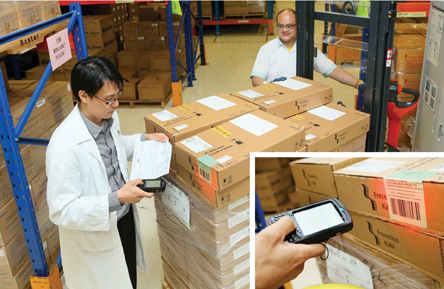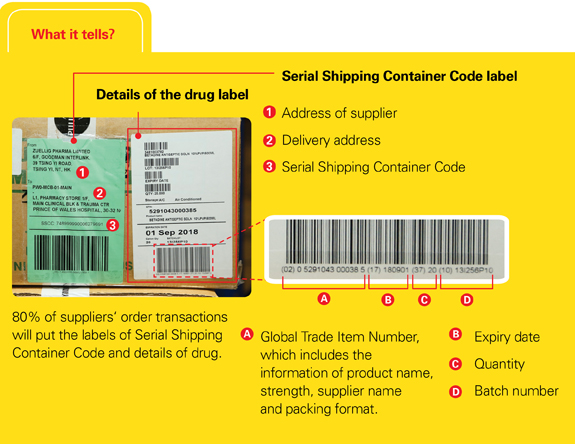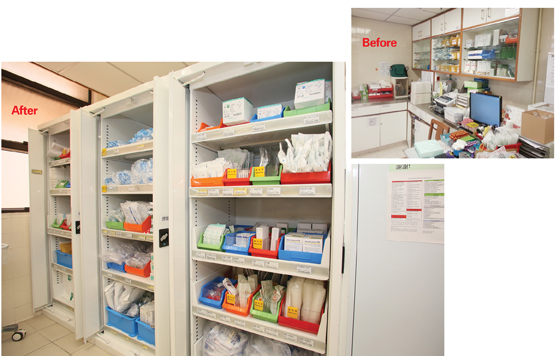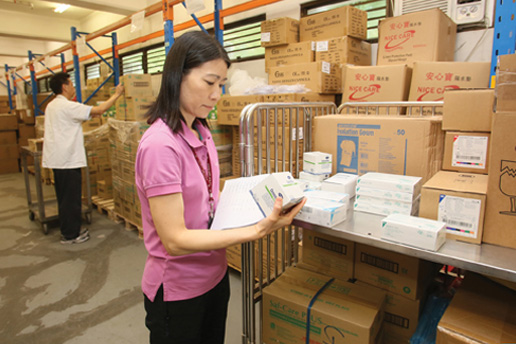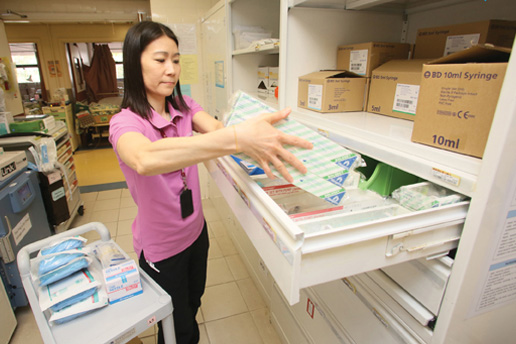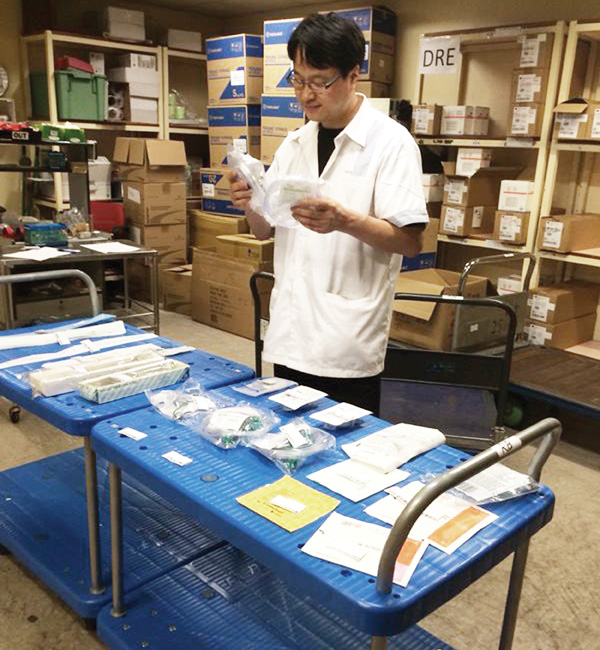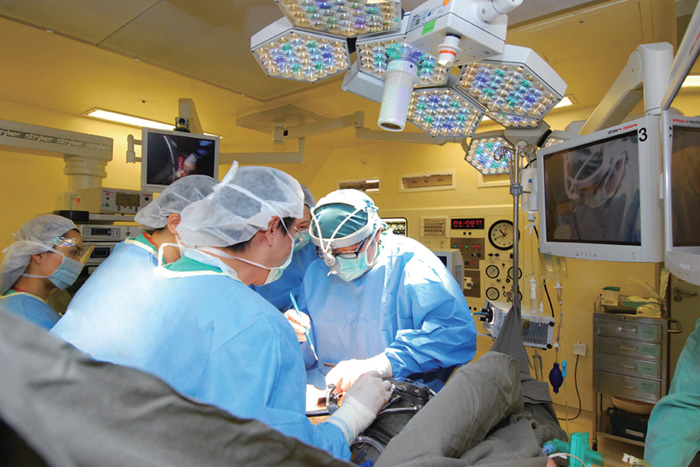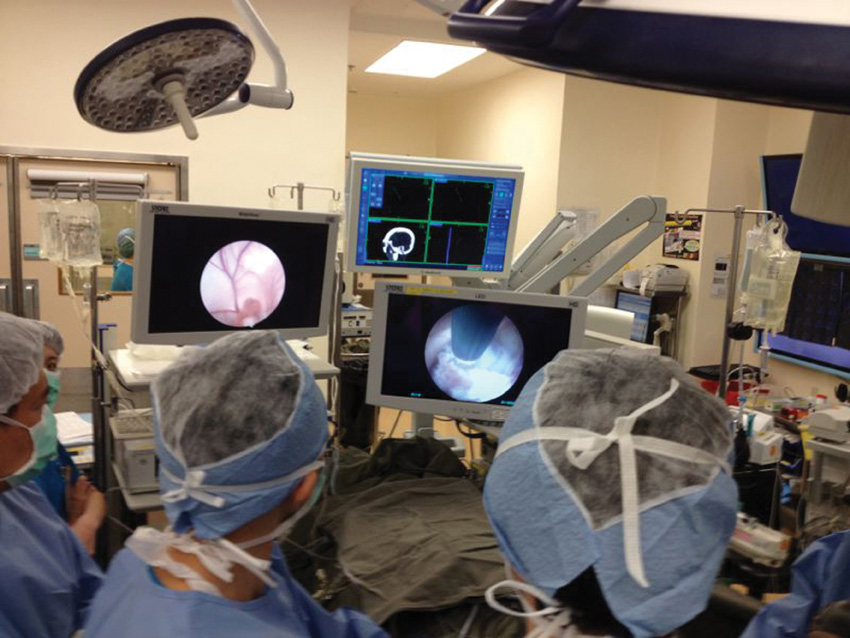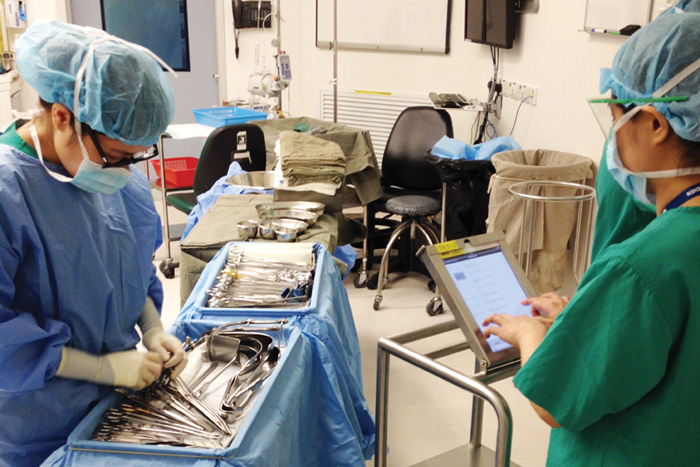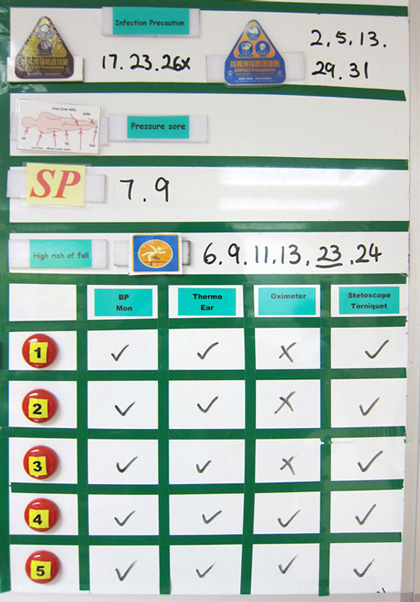Better pharmaceutical product tracking comes with a 'beep'
As part of the Hospital Authority’s continuing efforts to enhance patient safety, the Chief Pharmacist’s Office launched the Supply Chain Modernisation Project in 2010.
By replacing the old system of manually checking pharmaceutical orders along the supply chain with one that relies on internationally recognised scanning barcode system, the project has improved the ease, efficiency and accuracy of making and monitoring drug purchases from order placement to delivery. The success of the project gained it a ‘Healthcare Best Provider Implementation Case Study Award’ from the Hong Kong branch of international supply chain standards organisation, GS1.
Every time an order is placed with a supplier, the department that made the order will receive an electronic confirmation document which is used to verify details such as the name and manufacturer of the product, the country of origin, the quantity ordered and the expiry date before the order is dispatched for delivery. When the order arrives at the hospital, its barcode is scanned to cross-check that its contents match those listed in the original purchase order.
“The system might appear straightforward to the outside eye, but it is a complex combination of interrelated parts with small-but-crucial details. Managing the process involves dealing with over 150 drug suppliers, all the public hospitals in Hong Kong, over 100 pharmacies and stores,” says
Chiang Sau-chu, Senior Pharmacist of Pharmacy Informatics and Automation Technology and person-in-charge of the project.“ In the early stages, we had to talk with all HA’s suppliers one by one to ensure their systems could accommodate any changes necessary to meet our new needs.”
The barcode system has now been installed in all public hospitals, with the purchasing and installation of various types of new software and hardware, increasing manpower resources and making improvements and modifications to supplies storerooms.
Chiang added,“we will continue to develop the system and hope that to the system can help trace the drug supply to the patient’s level in the future.”
 The project helps to enhance the patient safety and gained a ‘Healthcare Best Provider Implementation Case Study Award’ from the Hong Kong branch of international supply chain standards organisation, GS1. |

